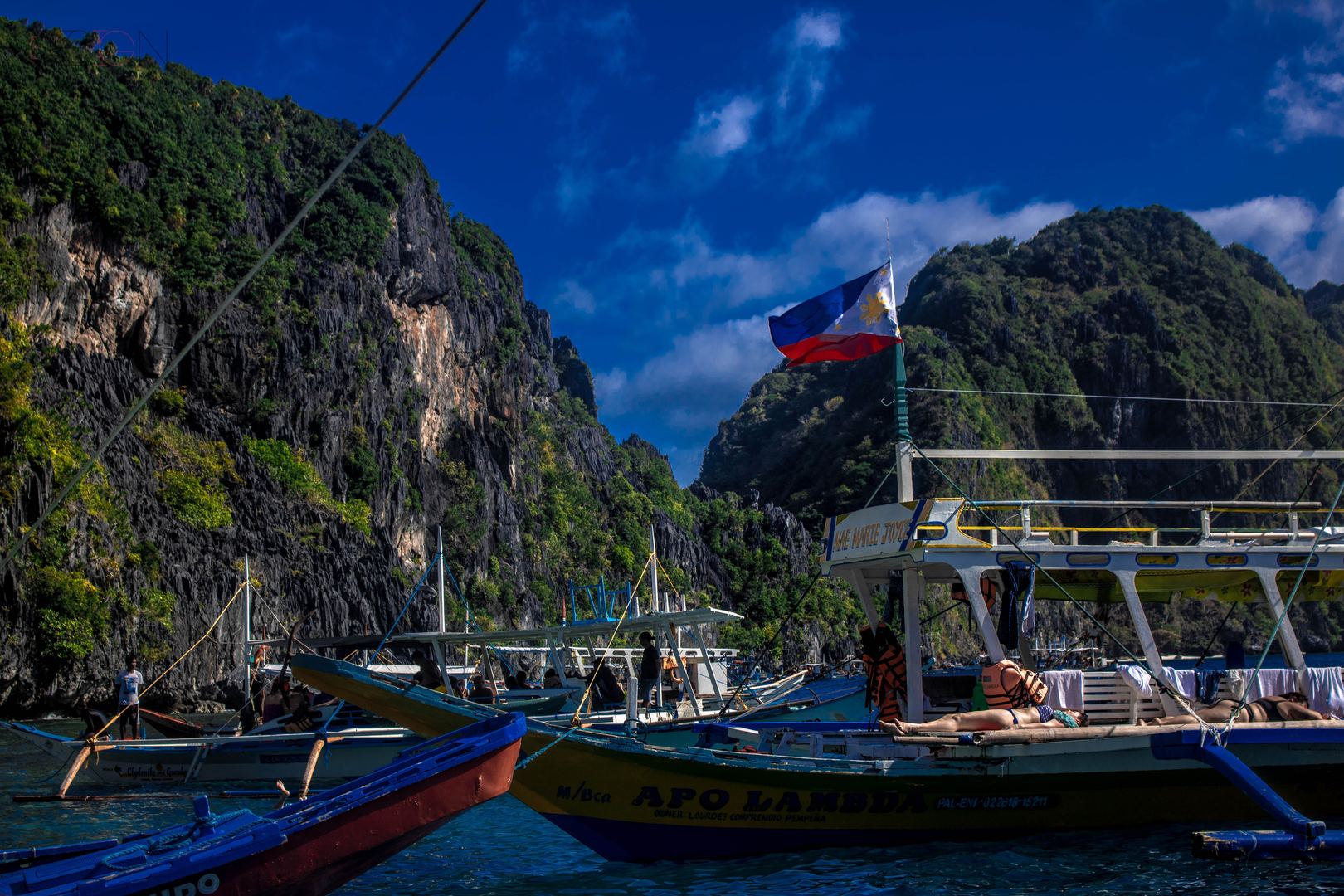
Flying Into The Philippines
Because the Philippines is an archipelago, most visitors arrive by plane. International airports are located in Cebu, Clark Freeport Zone, Angeles, Davao, Kalibo, Laoag, Manila and Zamboanga.
A much more congenial airport to arrive at is Mactan-Cebu International Airport or Kalibo International Airport , which are both at the centre of the Philippine archipelago and outside the Typhoon belt.
Passengers departing the Philippines have to pay a terminal fee (in addition to the Philippine travel tax levied on locals). This fee is included in airfare if flying from Manila or Cebu. Otherwise, this ₱550 fee (USD15 if paid in US dollars, Clark is now also ₱550) is paid before entering the immigration and pre-departure “air-side” area of the terminals.
Philippine Airlines (PAL), Cebu Pacific, Air Asia are the national carriers.
Driving In The Philippines
Tourists who hold a driver licence issued by the road authority of their home country are allowed to use that licence to drive in the Philippines for a period of until 90 days after their arrival in the Philippines. If their driver license is not written in English, it should always be accompanied by an official English translation issued by their country’s embassy in the Philippines.
Refer to information provided by the Land Transportation Office of the Philippines.
Public Transport In The Philippines
There are several modes of transport available in the Philippines, making getting around the country easy and convenient. Tourists can either drive themselves around in a private car or use one of the many public transport options.
Taxis
Taxis are a convenient and comfortable means of travel in the cities in the Philippines. They are ideal for expatriates because it enables them to get around quickly and easily. All taxis are metered. Most taxi drivers speak basic English, making communication easy.
Trains
The Philippines has a national railways service that covers most of the country. Long-distance train travel is becoming increasingly popular and is a good way to travel between major cities in the Philippines. Metro Manila has a regional rail service which extends to its suburbs and outlying provinces.
Buses
Buses are a common sight on the major roads of Manila and in the distant provinces. Buses are classified as either air-conditioned or ordinary (not air-conditioned). The destinations are marked down on a large placard in front of the bus.
Boats
Because the Philippines is an archipelago, boats and ferries are a common means of getting around the country. Types of boats range from upmarket ferries to small bangkas. Bangkas are the most common and traditional type of boat used in the Philippines and are usually used for short distances. Ferries are more comfortable, with several companies offering daily scheduled trips between islands. The fastest type of boat is a catamaran, which travels between some of the bigger islands and covers long distances in a short time.
Jeepneys
Jeepneys were originally old converted military Jeeps left over from WWII. They have seating in the back and are flamboyantly decorated. The name is a combination of Jeep and jitney. Jeepneys are a vital means of transport for Filipinos. It is the most popular and economical means of transportation. The colourful decorations of jeepneys embody Filipino culture, which make them iconic vehicles for the country. The designated routes of each jeepney are painted on its exterior. There is also a small placard in the front indicating its main destinations.
Plane
The easiest way to move between islands is by plane. Philippine Airlines (including sister carrier PAL Express), Cebu Pacific have significant domestic operations, linking many major towns and cities with Manila and Cebu, while Air Asia and TigerAirways also serve secondary destinations. There are also several smaller carriers which serve resort destinations (such as Amanpulo in Palawan), as well as more remote destinations. While larger cities are served by jet aircraft, many destinations and less busy routes are served by propeller-driven planes.
Where To Stay
Hotels:
Hotels in the Philippines range from five star business hotels to backpacker hostels, with the widest choice available in Manila. In other towns and cities, the choice can be more limited, although a handful of classy boutique hotels are beginning to emerge in provincial towns. Coastal settlements and small islands have resorts ranging from basic beach huts to exclusive luxury retreats.
Room prices in some tourist areas double or triple during peak seasons (Easter and Christmas/New Year). It’s essential to book ahead at those times, and most places require a substantial deposit for a reservation at any time of year.
Most of the luxury hotels in Manila are in the Makati district close to the Ayala Centre. Other places with a concentration of luxury options include Boracay and Mactan (Cebu), both of which have a number of international chain hotels. Elsewhere in the country the choices at the top end are more limited, although there are some great boutique resorts tucked away on small islands or secluded beaches primarily attracting wealthy locals and Korean honeymooners.
Grading: Hotels are graded in the following categories based on standards set by the Office of Tourism Services, Department of Tourism, Manila: Economy, Standard, First Class and Deluxe.
Camping:
There are few official campsites in the Philippines other than on trekking routes, although some beach resorts catering for budget travellers have camping spots and may hire out tents. Usually they’ll provide access to bathroom facilities. If there are no official sites then it’s often acceptable to pitch a tent on a beach, for example, but it’s best to ask locals whether they object. Ideally, get permission from the local barangay (community) hall.
Other accommodation:
Budget:Much of Manila’s budget accommodation (including hostels and guesthouses) is in the neighbouring Malate and Ermita districts, which are a little past their prime as the artistic hub of the city, but are handy for plenty of nearby bars and restaurants. In other towns and cities, there are usually a few simple guesthouses, often with both fan-cooled and air-conditioned rooms; shared bathrooms are one way to keep the costs down.
Budget accommodation on beaches extends to nipa (palm) huts.
Homestay:
There is no national homestay scheme, but that hasn’t stopped enterprising locals from welcoming tourists. In Pagudpud (North Luzon), for example, there are a few dozen accredited homestays and many more informal ones, acting as an overflow for the resorts in peak season. In some other areas there are only informal options, accessed by enquiring at tourist offices or barangay (community) halls.
Resorts:
There are resorts for every budget in the Philippines, from backpacker huts on remote beaches to chic boutique places in Boracay. There are also a handful of casino resorts, and places catering to scuba divers with training facilities, equipment hire and bars in which to relax and discuss the day’s adventures.

